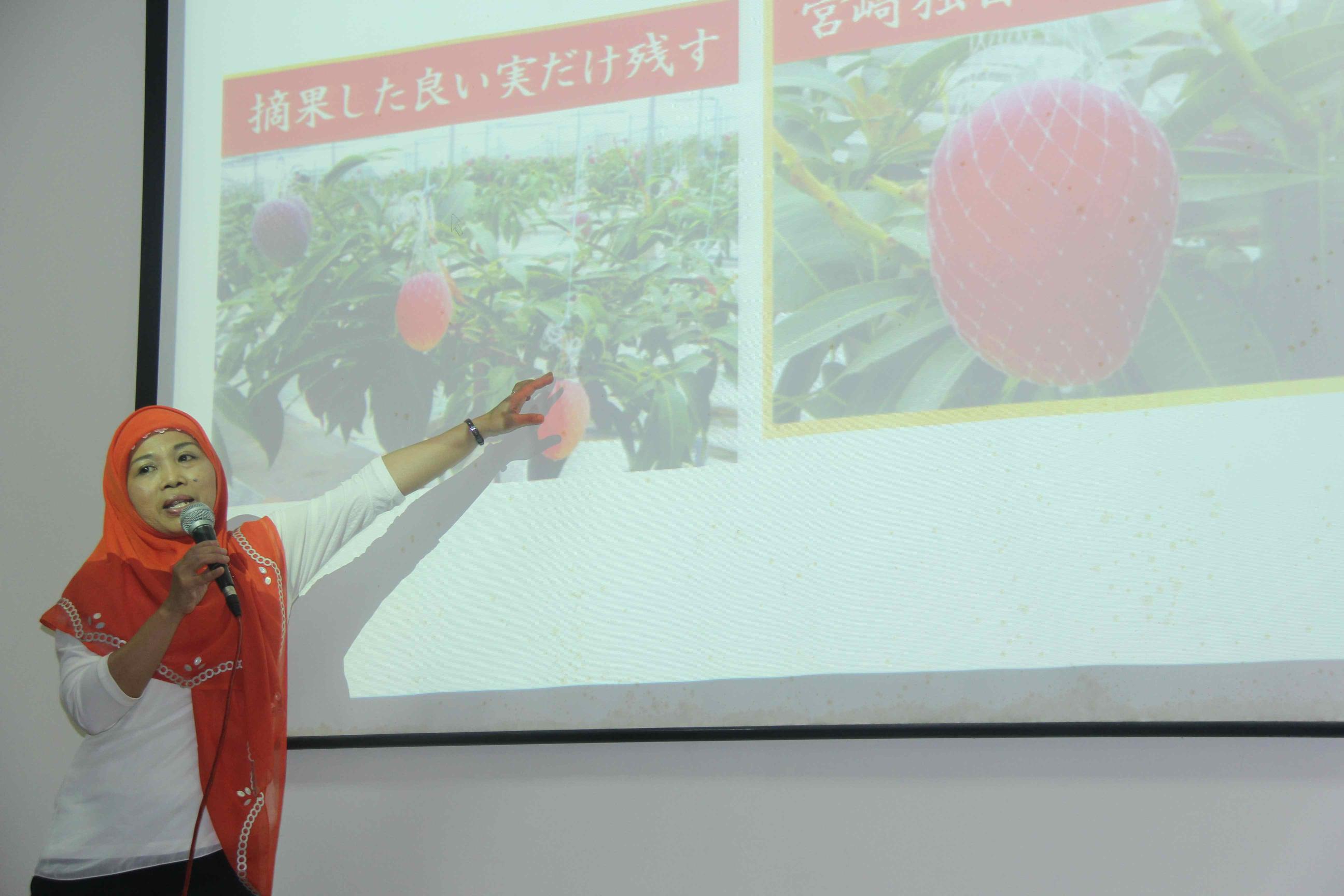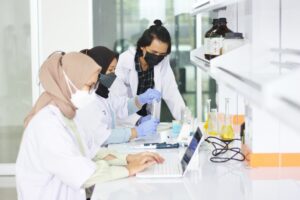
Indonesia is supposed to be able to learn from Japan, particularly in food industry and agriculture. Japan is a country which the nature is less support to good life since it is located in a zone affecting earthquake in this country. However, they could establish their food technology and agriculture. They got difficulty in providing their own food, but now they could have produced it.
It was the statement of Erni Johan, a senior researcher of Ehime University, Japan, when giving public lecture to students of Agriculture Faculty of Universitas Muhammadiyah Yogyakarta (FP – UMY) year 2013. The visit of an Indonesian researcher, staying in Japan, as a guest lecturer invited by Faculty of Agriculture of UMY aimed at sharing new knowledge and experience to the students. This lecture was conducted on Mini Theater of Faculty of Medicine and Health Science (FKIK) UMY on Friday (21/11).
Erni explained that in Indonesia the process of post-harvests carried out by either individuals or industries was weak. Because of not having been supported by sophisticated technology, the cultivation was weak as well. “In fact, the harvests in Indonesia, either vegetables or fruits, are fresh after being cropped. But, when they are sold in traditional markets or supermarkets, the condition of vegetables and fruits have not been fresh anymore as when they are cropped,” she expounded.
The alumnus of Agriculture Faculty of UGM told that, in Japan, the process of post-harvest was different from other countries. When vegetables and fruits have been cropped, they were cleaned by using ice water. “Then, they are wrapped or packed to be sold in traditional markets or supermarkets. Thus, the marketed vegetables and fruits remain fresh whole day and in the following day,” she stated.
She also provided an instance of agricultural technology products of Japan which succeeded and had high selling price such as mangos. Mangos of Japan, in fact, had a number of distinctions from Mangos of Indonesia. She conveyed that a mango, so-called Taiyo Manggo, could only be cultivated in Miyazaki Province. “Nevertheless, the uniqueness of this mango is the sweet taste, color, and the number of the products.”
She argued that a Taiyo Manggo could produce no more than 10 mangos. The color was not green, but it was red and purple. “It is caused by genetic and technological engineering which they do. Japanese could manage that a tree would not produce more than 10 mangos. It would coin the nutrition of a hundred fruits, for instance, to be ten fruits. Therefore, the taste of Taiyo Manggo would be sweet. A Taiyo Manggo is cost 1000 yens or a hundred thousand rupiahs,” she uttered.
Thus, Erni encouraged and expected that students and Indonesian could cultivate and develop the agriculture of Indonesia. Being noticed from the nature, Indonesian soils were much more fertile than Japan soils. “So, I encourage you to cultivate and enhance the agriculture of Indonesia,” she asserted.







